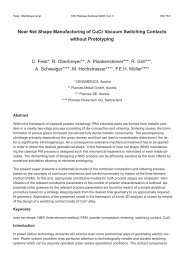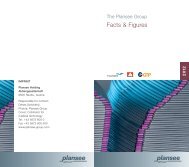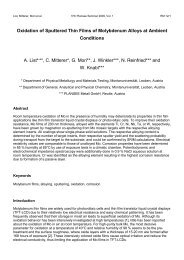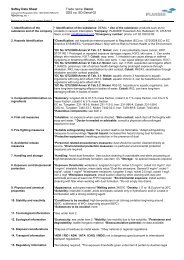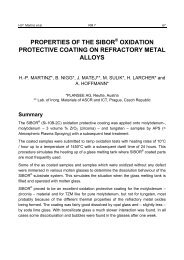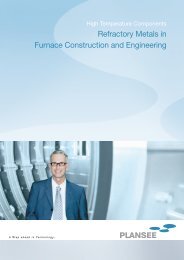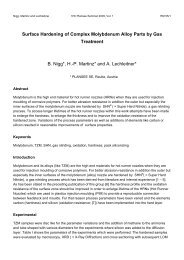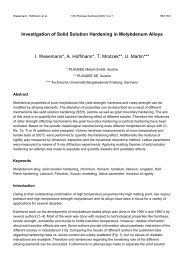Finite Element Analysis of X-Ray Targets
Finite Element Analysis of X-Ray Targets
Finite Element Analysis of X-Ray Targets
You also want an ePaper? Increase the reach of your titles
YUMPU automatically turns print PDFs into web optimized ePapers that Google loves.
A. Plankensteiner, P. Rödhammer RM 2 11<br />
2. Operational requirements for CT applications<br />
Basic requirements for X-ray anodes are highly stable radiation output and high<br />
voltage stability over the lifetime <strong>of</strong> the tube (~10 5 exposures). Form stability <strong>of</strong> the<br />
focal track and balance retention are prerequisite for image quality and bearing life,<br />
respectively. Demanding procedures such as a CT spiral scan call for cyclic inputs <strong>of</strong><br />
electric energy <strong>of</strong> up to 60kW/30sec with cooling times up to 10 minutes. Rotational<br />
frequencies for anodes with a diameter <strong>of</strong> 200mm are presently constrained to <<br />
150Hz due to limitations in the material properties. Temperatures at the brazing<br />
interface are designed to stay below 1400°C, with a safety margin up to 1600°C in<br />
case <strong>of</strong> disruptions. Novel diagnostic techniques will involve considerably higher<br />
ratings. In particular, the size <strong>of</strong> the focal spot will be reduced to < 1 x 10mm 2 , at power<br />
levels < 100kW and energy inputs < 1MJ.<br />
One answer to inadequate life <strong>of</strong> the focal track at present ratings, and much more so<br />
at novel techniques, lies in anodes with larger diameters rotating at higher rotational<br />
speeds. Here, an up scaling to diameters <strong>of</strong> 250mm and an increase <strong>of</strong> the rotational<br />
frequency up to 200Hz appear feasible based on an evolution <strong>of</strong> present-day tube<br />
technology. However, the resulting centrifugal forces will put still higher demands on<br />
the mechanical properties <strong>of</strong> the materials used in the design <strong>of</strong> the X-ray targets. This<br />
holds true in particular for the molybdenum alloy disc that is largely responsible for the<br />
form stability <strong>of</strong> the compound anode.<br />
3. Design and production aspects <strong>of</strong> X-ray anodes for CT<br />
applications<br />
The structural backbone <strong>of</strong> the anode is generally formed by a disk made <strong>of</strong> a<br />
dispersion strengthened molybdenum alloy such as TZM (Mo 0.5Ti 0.08Zr 0.025C),<br />
MHC (Mo 1Hf 0.1C) or closely related alloys [1]. A thin layer <strong>of</strong> a W/Re alloy (for CT<br />
applications usually W10Re) serves to generate X-rays upon impact <strong>of</strong> energetic<br />
electrons emitted from the cathode. A graphite ring is brazed to the back side <strong>of</strong> the<br />
molybdenum disc, serving both for heat storage and for heat dissipation by radiation.





